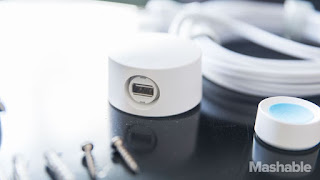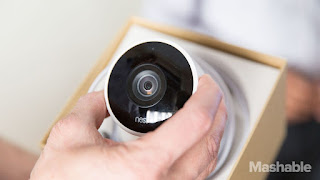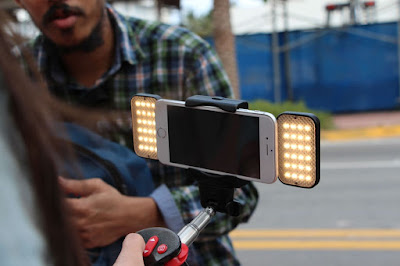The rumors about Nest Labs were true. No, no, not the rumors about Alphabet selling the company; the ones about it delivering a Nest Cam designed for the great outdoors.
The Nest Cam Outdoor is real and it’s pretty sharp-looking.
Nest announced the new security camera on Thursday and is already offering it for pre-order. The $199 device doesn’t ship until the fall.
This is a bright spot in what’s otherwise been a somewhat trying few months. First Nest gets boxed out of the Google Home smart hub development, then founder Tony Fadell exits. However, Nest’s new CEO, Marwan Fawaz, made it clear earlier that the company is far from done and not for sale. He also highlighted new product initiatives, the first of which we’re finally learning about now.
A better guard
When Nest acquired Dropcam in 2014, the device was originally considered a monitoring camera, said Nest Product Manager Mehul Nariyawala. However, Nest executives soon realized that most Dropcam people were using it for security. "Now we think of it as a security camera,” he said.
A year later, Nest launched the Nest Cam, a slightly upgraded, but mostly rebranded version of the Dropcam.
Nest cam outdoor will come in nest's typical smart packagng. we saw some pre-production boxes.
As they continued to sell the new web cameras (and end-of-life-ing older Dropcams), Nest found that many Nest Cams were either being placed or at least pointed outside. Putting them outside the home became so popular that third-party companies began to sell weatherproof housings for the Nest Cams.
With Nest Cam Outdoor, Nest set out to build a 24/7 home security camera that’s completely weatherproof and designed to live outside.
Ready for anything
The new device looks little like its sibling Nest Cam. The mostly white, $199 Nest Cam Outdoor is shaped like one of those chocolate, cherry-filled candies, with the camera lens on the flat side. Set behind a glass cover, the device shoots 1080p video. The small magnetic base snaps onto the Nest Cam Outdoor’s curved back and can be moved into any position. It can attach to your house via those same magnets (if you have any metal on the exterior of your home) or with a pair of screws.Designed to be plugged into one of your exterior power outlets, the Nest Cam Outdoor comes with 25 feet of power cable. The first half ends in a USB plug that connects to the AC/DC converter, which then runs to a traditional two-prong outlet.There is nothing to stop would-be thief from disconnecting the Nest Cam Outdoor or cutting the cable, but they will be recorded up until the moment they do and, just as with the original Nest Cam, all the video is immediately stored in the cloud, meaning it’s still accessible to the cam account owner.

The nest cam outdoor comes with all the wiring and plugs and plugs you need to power it from one of your standard outdoor outlets.
See all hear all
In addition to recording sound through its downward-facing microphone, the Nest Cam Outdoor lets you speak through it. If you get an alert that someone is at your front door, you can ask them in real time why they are there.
The Nest Cam Outdoor has a 130-degree field of view that Nariyawala said works just as well in night-vision mode. “We light up entire scene,” he said.
Nest is also raising the game on the notification side. Nest Cam Outdoors can discern the difference between just motion in front of the camera and actual people. An initial notification might say that it thinks it saw a person, but it won’t raise the alarm until it knows that it 100% saw someone. “We want to give people insights versus deluging them with info,” said a Nest spokesperson.
this is what nest cam outdoor notification will look like on android.
Those notifications will arrive, at least in Android, complete with thumbnail images. Nariyawala told me Apple’s iOS 10 will support similar notifications.
No such thing as free monitoring
While you can still get alerts for free, you won’t be able to replay whatever video and sound the Nest Cam Outdoor collected in the cloud unless you pay the Nest Aware monthly subscription fee. It’s $10 a month for 10 days of continuous recording and $30 a month for 30 days. Each replayable video snippet is between 10 and 60 seconds.Nest is also bringing back a favorite Dropcam feature, Private Sharing — the ability to share the live stream with family, friends and neighbors.
To ease installation, the new Nest Cam Outdoors will ship with all the necessary screws and wire clips. Nariyawala added that home owners can paint the waterproof cable and plug any color they like.
In person, the hardware is impressively designed and feels reassuringly solid. Set-up with the included hardware and, especially, those powerful magnets, looks easy. We won’t know, though, how good an outdoor security camera the Nest Outdoor Cam truly is until we test it later this year. Preorders start Thursday.













